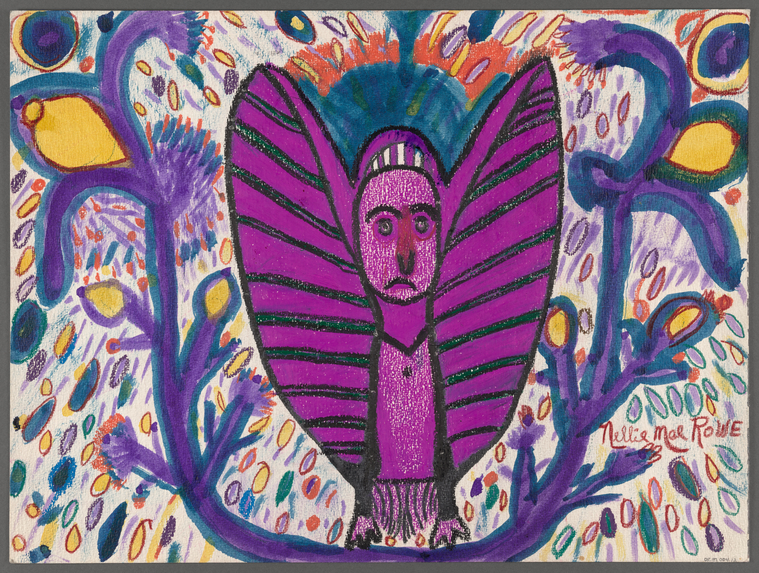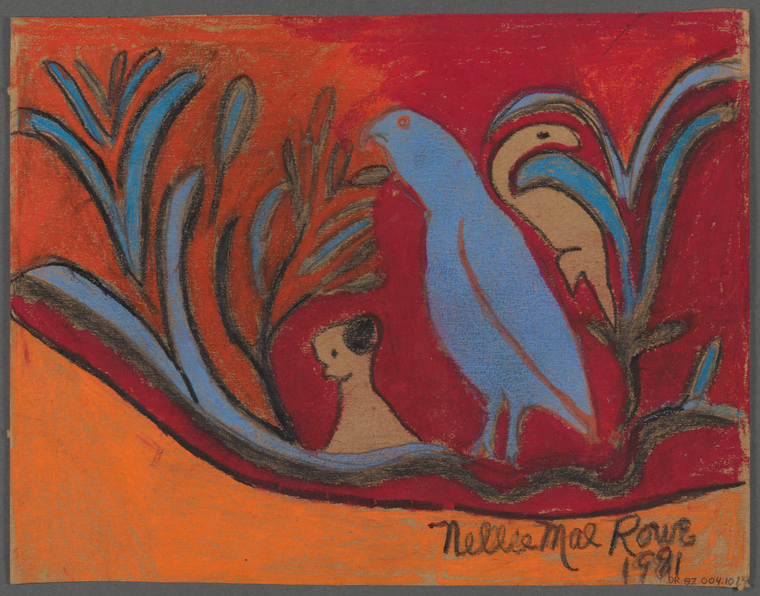"When other people have something they don’t know what to do with, they throw it away, but not me. I’m going to make something out of it. Ever since I was a child, I’ve been that way. I would take nothing and make something." -Nellie Mae Rowe
Born on July 4, 1900, Nellie Mae Rowe’s creative spirit seems to have been predestined. Her father was an expert basketmaker and blacksmith, and her mother was a quiltmaker and gospel singer. From the outside, Rowe's life as a rural Georgia native might've seemed fraught with racial injustice and poverty, but the interior universe Rowe created was one of wonder.
Self-taught, Rowe would utilize 'everyday' materials as a vehicle to express her creativity in the form of mixed media works on paper, chewing gum sculptures, hand-sewn dolls, and reimagined photographs, among other inventive formats.
The reemergence of Rowe's work in recent years is a testament to her creative legacy, and the ways in which her life-long necessity to find freedom in expressing her creativity transcends time. A retrospective mounted at the Brooklyn Museum in 2022 contextualized "Rowe’s practice as a radical act of self-expression," and a recently released feature length documentary honors Rowe for her creative genius and "traces the lifespan of an artist who struggles to dedicate her life to art while exploring the personal and political events that shaped her singular body of work."
In a 1982 interview with Judith Alexander (courtesy of the Judith Alexander Foundation via the Souls Grown Deep), Rowe details her upbringing and influences of the humble environment that shaped her art-making practice.














